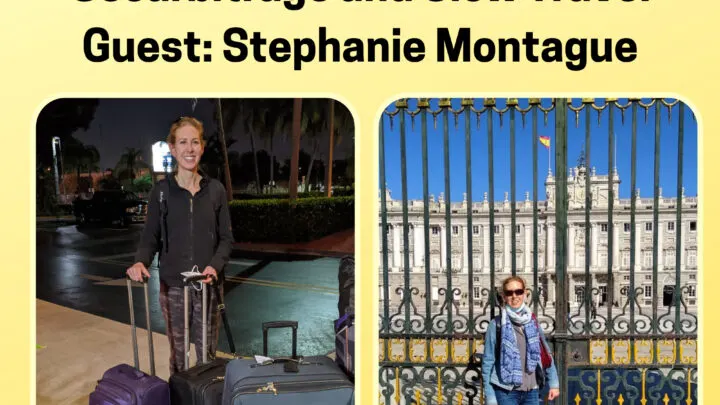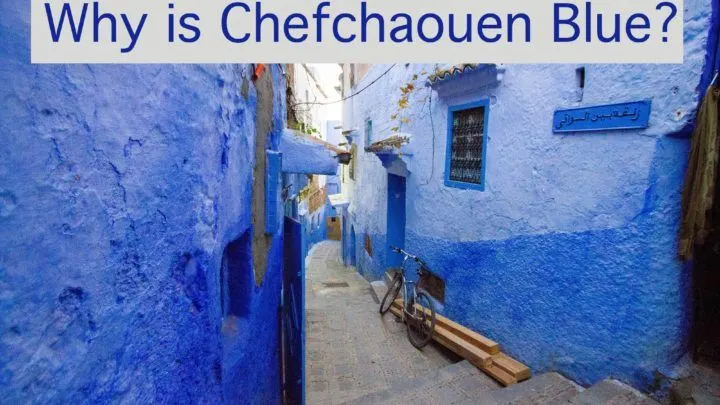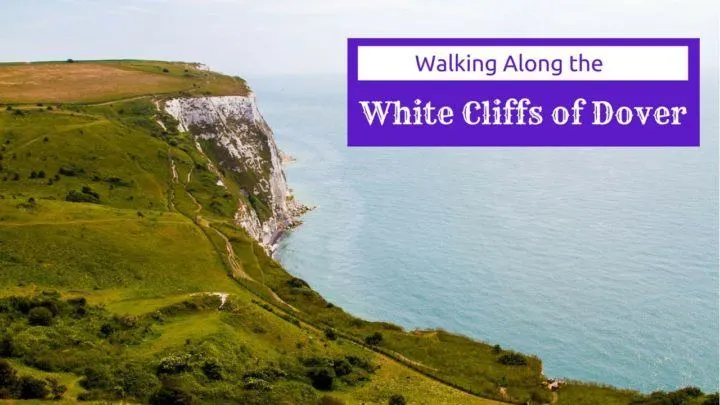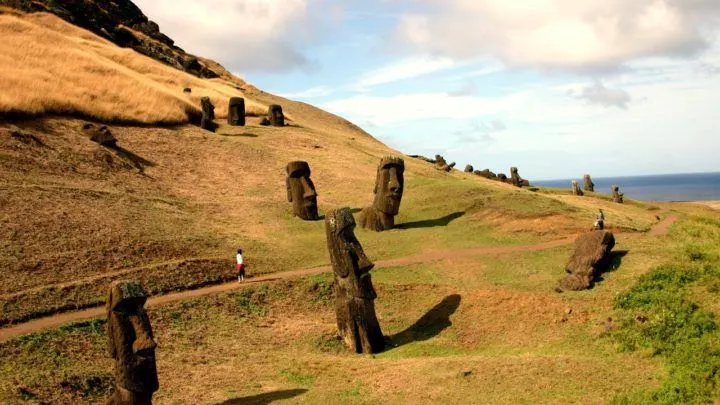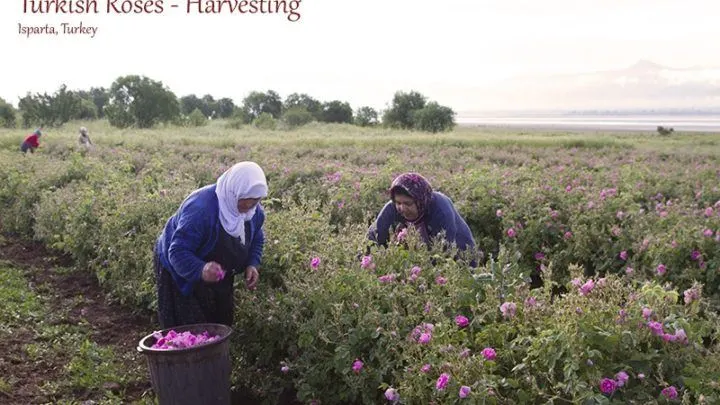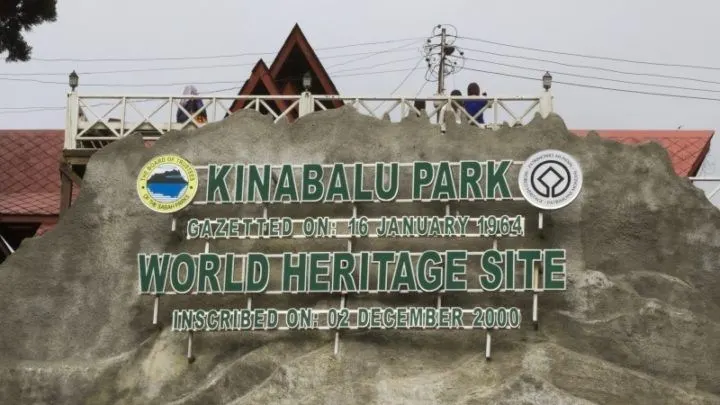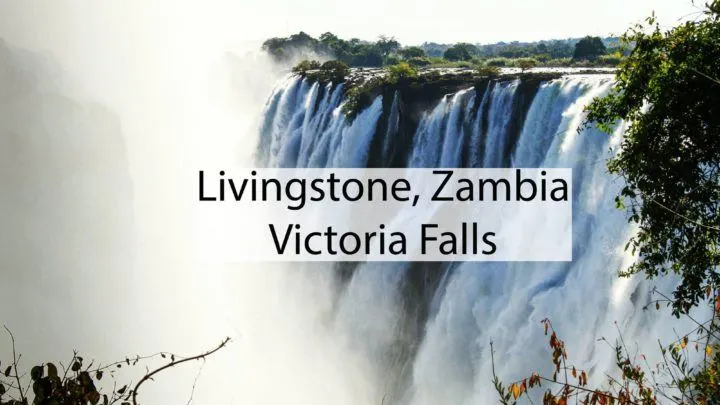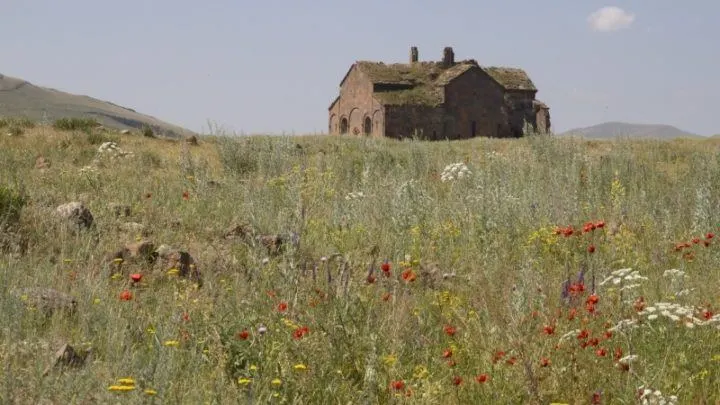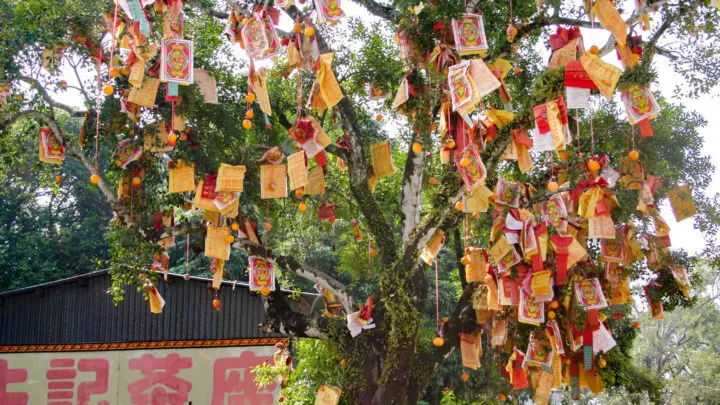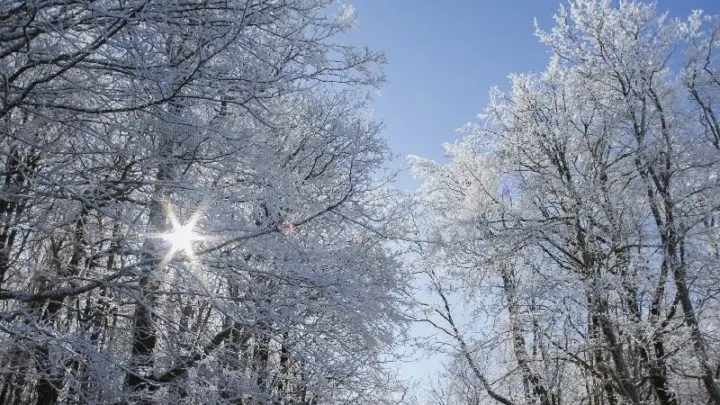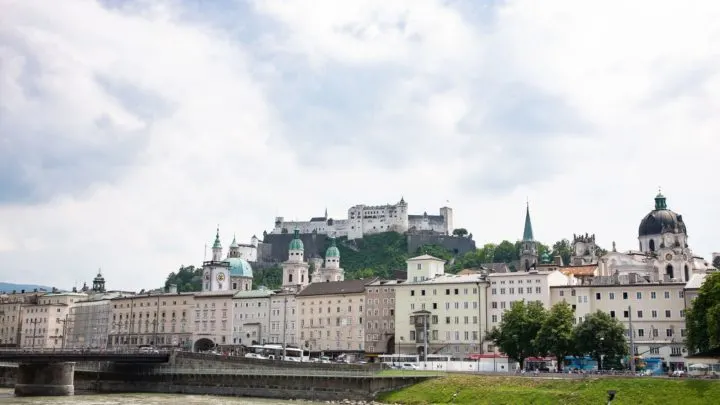Have you heard of the Camino de Santiago? Are you hoping to hike it one day? In this podcast episode, we talk with three experts on the Camino de Santiago routes and what to expect on the trail.
Or you can always subscribe to one of these:
Apple Podcasts
Google Podcasts
Spotify
Amazon Music
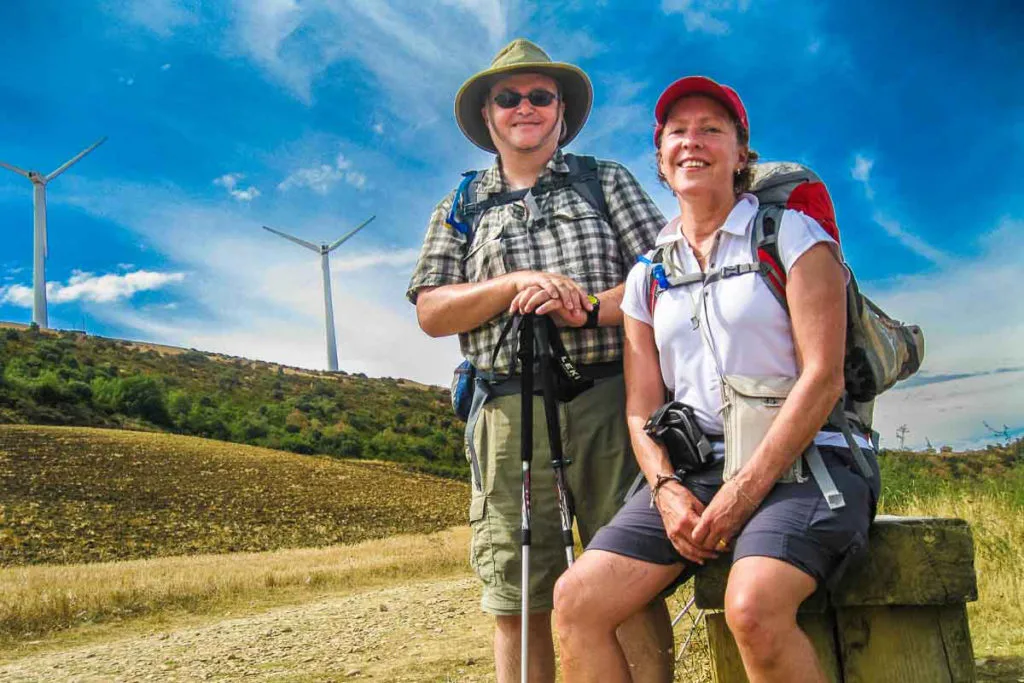


Show Notes
02:00 – First impressions of the Camino Francais with Tom from Travel Past 50
02:51 – First impressions of the Camino Portuguese with Katy from A Rambling Unicorn
05:27 – How much does it cost to walk the Camino de Santiago?
11:01 – Walking the Camino during COVID
16:01 – Daily routine on the Camino de Santiago
22:13 – What happens at the end of the walk?
29:15 – What is the Pilgrims’ Mass?
31:55 – Why do people walk the Camino de Santiago?
41:46 – How and what to pack for walking the Camino
53:50 – How long do you have to finish walking the Camino de Santiago?
56:20 – First Impressions of the Camino de Santiago with Alya from Stingy Nomads
59:35 – Tips for planning and walking the Camino de Santiago
1:00:24 – Staying in Alburgues
1:07:20 – Walking the Camino with children
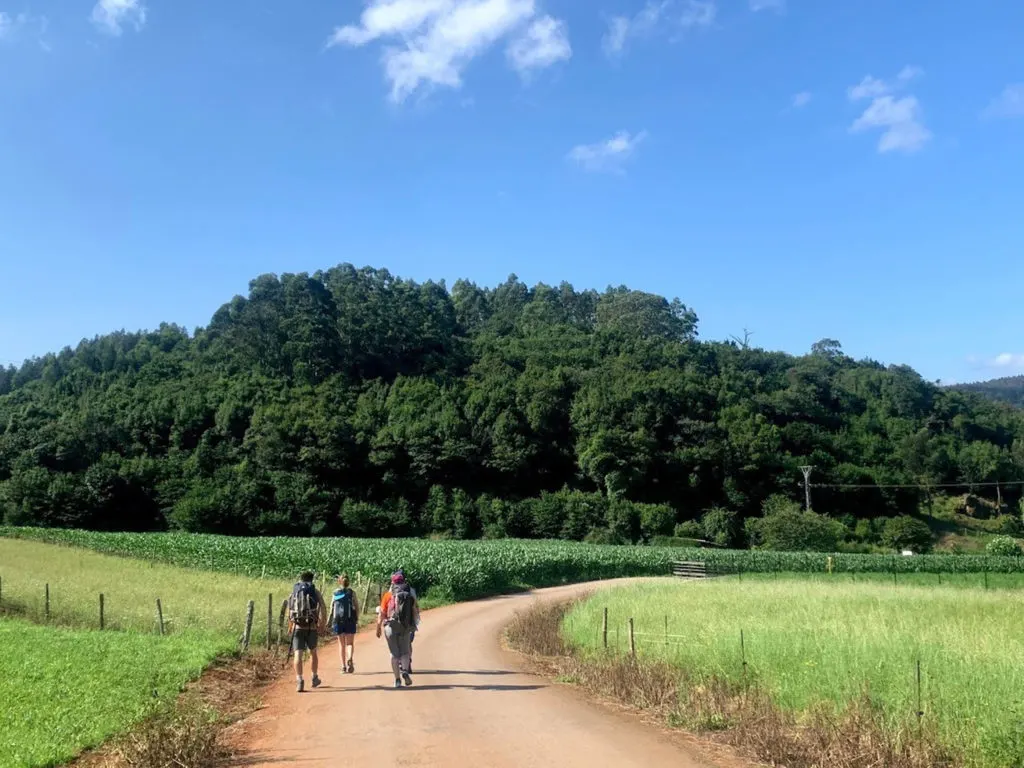
Worth Mentioning
Tom’s Website: Travel Past 50
Katy’s Website: A Rambling Unicorn
Alya’s Website: Stingy Nomads
Official Pilgrim’s Website
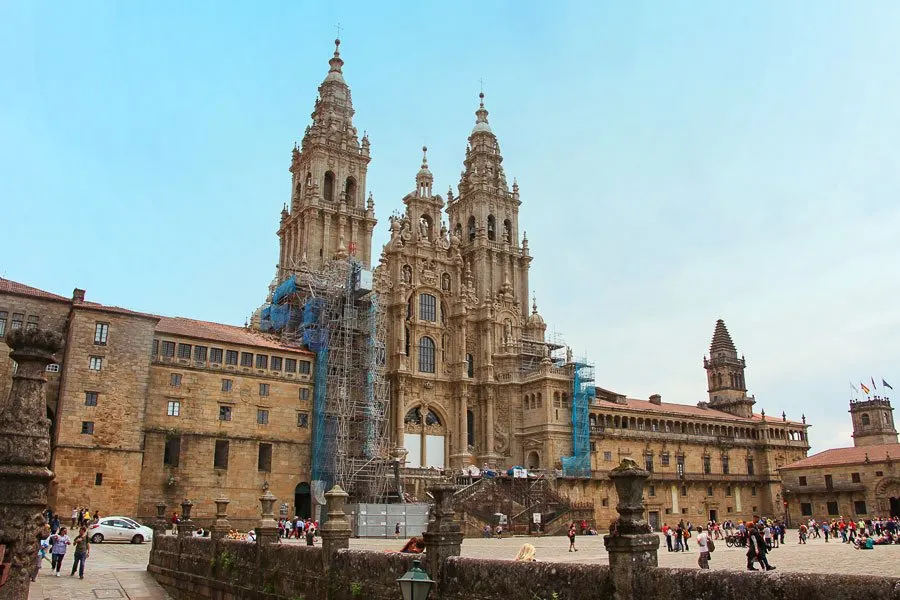
Join Our Facebook Community


If you enjoyed the Camino...

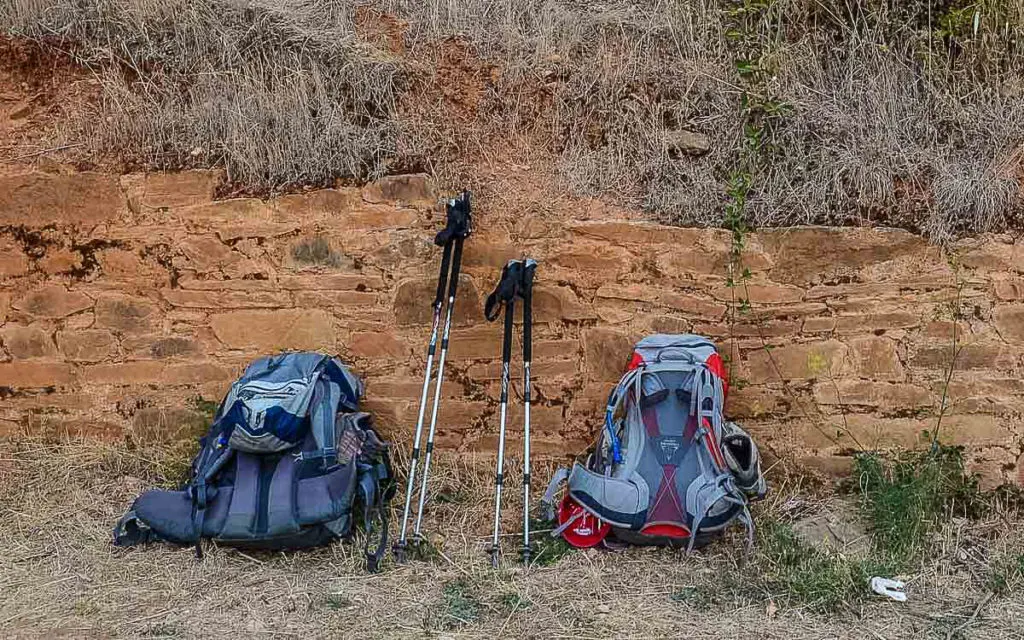
Transcript of Full Podcast
Corinne 0:00
Today we’re talking about walking the Camino de Santiago. So the Camino de Santiago, for those of you that don’t know, is one of the longest walks, the most popular walks in all of the world, and 1000s of people walk it every year.
And I believe people have been walking it during the pandemic, too. So we’re gonna find out from a couple of experts what, exactly, it’s all about, where it goes, how long it is. All that kind of good stuff in case you’re interested in doing it yourself.
Jim 0:33
Welcome to Streets and Eats, the travel and food podcast dedicated to taking our listeners to the sights, sounds and flavors of fascinating places near and far, both on and off the beaten path. We’re Jim and Corinne Vail and we’ve been traveling internationally and domestically together for decades, visiting more than 90 countries in all 50 states in the USA.
We’ll share all of the local knowledge and food expertise we’ve gathered through years of living as expats in Asia and Europe, as well as traveling with family spanning multiple generations around the world. Join us each week for a new adventure.
Corinne 1:03
So we have with us Tom and Katy from their blogs Travel Past 50 And Katy your blog is Rambling Unicorn which is all basically about hiking. Whereas Tom’s is much more world travel. Tom, where did you go on the Camino and gives us a little introduction.
Tom 1:25
We did the so-called French Route, the Camino Francais and we started in St. Jean Pied de Port in France. First day you walk over the Charlemagne route over the Pyrenees to Roncesvalles or in French, Roncevaux and then you’re in Spain. And from there, it’s about 500 kilometers, or I’m sorry, 800 kilometers, 500 miles to Santiago. And you just keep walking.
Corinne 1:58
And so how long did this take you?
Tom 2:00
Well we did it in the year that I turned 60. So we weren’t quite as fast as a lot of people do it. I think we took 40 days, including three rest days. So we were actually walking for 37 days. I think that’s maybe a couple of days longer than typical. I think most people do it in 33 to 35 days. But we were not out to break any records. Well, at that we averaged walking 22 kilometers a day. So that’s, you know, that’s enough.
Corinne 2:45
I agree with that. I definitely agree with that. How about you, Katy, what have you done?
Katy 2:51
Well, I walked the Camino Portuguese. So most people walk the French route or that’s the route that most people have heard of. But there’s many Camino routes across Europe that all end in Santiago de Compostela. The second most well known one is the Portuguese Way.
You can either start in Lisbon, or you can start in Porto, and then you walk north to Santiago de Compostela. And I started in Porto, and I just did this a couple of months ago. So I did it during the pandemic.
It’s about 240 kilometers, which is about 150 miles, and I was not in a hurry. So I went slower than Tom, I was going maybe 18 to 20 kilometers a day. And that took two and a half weeks. I took a couple rest days and I was just taking my sweet time and really enjoying it.
Tom 3:46
I should mention I’ve I’ve also done parts of the northern route, the Camino del Norte that starts in Irun in the Basque Country and kind of hugs the coast, the north coast, the Atlantic coast of Spain.
It’s probably about the same length, but it’s much more difficult than Francais because it’s mountainous all the way, pretty much. So you’re going up and down a lot, especially up.
Corinne 4:24
It seems to be when you’re hiking that when it’s a hilly thing that you always do more up then down. I don’t really know how that works.
Tom 4:31
Well. You learn, I think, real quickly if you do any mountain hiking, and we’ve done a fair amount, that going down is maybe more difficult than going up. It’s a lot harder on your knees and legs and ankles and things and that’s when you’re really glad that you have hiking poles if you have them so you brace yourself on the way down.
Corinne 4:58
Something to catch your fall a little bit. With my luck page they’d just go over the side or something, just like when I’m skiing, same thing. Okay, so from your experiences about how much does it cost to hike the Camino? I know that there are services out there that will arrange everything for you. But I also know that you could do it independently. I’m assuming both of you did it independently?
Tom 5:27
Well, we did. I’ll answer that first. I mean, my dad is a little old right now, and this was pre pandemic too, so what I’ve heard is that a lot of the albergues, so in other words, the sort of dormitory type inns that you stay in, are closed, or are open on a much more limited basis.
So now, I think it’s more difficult to do it, and you might be better off reserving in advance, which is a bit of a problem, because when we started out every day, we didn’t really know where we were going to stop. We would go as far as we felt comfortable going. You could always just walk into an albergue and get a bed.
I think it happened only maybe two or three times that the first place we stopped didn’t have a bed for us. Now getting back to how much that cost. I mean, it was anywhere from five to fifteen euros when we did it. I think it’s probably a little bit more than that now.
Corinne 6:36
For the bed itself?
Tom 6:37
Yeah, per person. And for that you got a cot or a bed in a shared room, shared bathrooms, shared shower, probably had a laundry sink where you could wash your clothes and a line where you’re gonna hang them up. And we did it in September.
It was still plenty hot on the Camino Francais. So your clothes dried quickly in the sun. In other words, I mean, I think if you budgeted 30 to 40 euros a day, including food, that would be enough.
Corinne 7:19
Is that 30 or 40 euros a day for each person?
Tom 7:25
Well, the lodging, let’s just say the lodging is going to be 15 each, and then, whatever you spend on food. Most villages that you stopped in had little family owned restaurants that had Camino meals. They would call them. And they were, you know, a regular sort of Spanish three course meal. It would be salad, potatoes and fish or salad, potatoes and meat. And a glass of wine would be 10 to 15 euros.
Corinne 8:01
That’s where they were making their money.
Jim 8:05
How about you Katy, what did you find?
Katy 8:08
Yeah, so I hiked during the pandemic and the albergues, some of them were open and some of them were closed, the public ones, some of them are open and some weren’t. Many of the private ones were open.
I brought a little sleeping bag with me because I thought I would be sleeping in them. And then that’s the great thing about this kind of walk. You can walk as many miles as you want to walk in a day or as little miles.
Like the first day I was on the Camino, my husband was staying in Porto in an Airbnb as we’re traveling around long term right now, and like three miles in, I kind of re-injured an old injury on my foot. And I said, this is it for today. I called an Uber and went back to the hotel, spent a couple days recovering.
Then two days later, I called an Uber to take me right back where I started, and I just kept going. And then my first night on the trail I did go to an albergue and I stayed there. I met a couple of nice ladies in my room and it was really nice.
Afterwards, I thought I was gonna want to meet people on the trail and make lots of friends which I have done on other long distance trails, but I just realized what I really needed was alone time. I needed time with my thoughts and just thinking about things and some spiritual moments.
So what I did is, every morning or so, I would kind of think about how many kilometers or miles I’d might want to go that day. And then I would open up like a reservation site and just book myself a private room and a guest house or Airbnb.
It was awesome. I had like my own little bathroom every night and most times it worked out pretty great. So it really depends, I was spending generally about 30 to 40 euros a day on my private low budget room.
I did splurge a couple nights and got a nicer room or a place where I can find, you know, sometimes you’re there’s not as many options. And then I stayed in a couple of albergues too. It’s possible to do it that way. And if you do, you don’t have to bring a sleeping bag, which makes your overall pack weight lighter. So I was probably spending more like, maybe 50 euros a day, the luxury version.
Corinne 10:30
Actually, I’m glad to hear that. I think that, listeners are gonna be from both persuasions, more the budget friendly and more the luxury friendly. So I think that’s great. That just happened to be serendipitous, I love it.
Jim 10:43
And that’s been kind of the way that we’ve been doing a lot of our road trips, pre-pandemic, is, you get up in the morning, you decide where you’re going and book something before you leave. So that’s good to know that even during the pandemic on the Camino, you’re able to do that.
Tom 11:01
I’d recommend a Camino Facebook group. It has got a lot of current advice. That and I think probably the trend is definitely toward reserving in advance these days for a couple of reasons. One is there are a lot more people on the Camino than there used to be; two a lot of the albergues are closed because of COVID. And three, you might, because of COVID, not want to be sleeping in the same room as 20 other people you don’t know.
Corinne 11:45
That’s a good point.
Katy 11:46
That was exactly one of the reasons why I chose not to stay in albergues. I didn’t feel comfortable with it.
Tom 11:54
Yeah, and on the good side Spain is a lot more COVID aware then the United States is. For example, we were just in Spain, and everybody’s wearing masks. Everybody’s vaccinated. They take it seriously, you have to be vaccinated to get into Spain in the first place if you’re not Spanish. And the Spanish vaccination rate is above 90%, I believe. It’s way safer than the United States.
Corinne 12:29
Well, I can attest to that as like we said, we just got over omicron. Katy, did you wear the mask, I mean, you’re outside and you’re not necessarily with people. So how much did you wear the mask while you’re doing this whole thing? Just in towns? Like give me an idea?
Katy 12:44
Yeah, I definitely wear a mask when I am around other people, in close quarters. When we weren’t eating or drinking, we would wear a mask. But you know, I sort of avoided the albergues. And when I did go to albergues, like, you’re not gonna wear a mask when you’re sleeping.
I mean, maybe you’re supposed to, but no one I saw did. And that’s why, after I spent one night I balked. There might be some albergues where people do but I only went to a couple and the ones I went to they weren’t.
But I did wear a mask when I was in other kinds of social situations like in grocery stores or kind of in close quarters with people. But when you’re outside and you’re able to have a social distance, and you have the air around you, it doesn’t really make sense.
And so you’re obviously, you’re working out and you’re hiking and walking, and it’s kind of hard to wear masks. So I always had it hanging from my ears or something like that. If I needed to pull it out of my pocket or whatever, if some other people came by, especially if they weren’t pilgrims, I would definitely put it on.
Jim 13:59
What about vax cards, were people checking vax cards at restaurants or anything like that?
Tom 14:04
Not in Spain. They do in France, but then like I said, you know, as a foreigner, you can’t even get into Spain if you’re not vaccinated. So we had a QR code on our phones that I think we had to show exactly once when we were in Spain. We had to show it at immigration to get into the country, but after that, never had to show it.
Katy 14:36
The rules keep changing in Europe, and it changes from country to country and it changes constantly. I was in Portugal, a few months last summer, right when the rules were changing and then they started enforcing showing your vaccine card all the time. And I tried to do that and then we left for a few months and came back to Porto to start the Camino and they had… gosh, I traveled a lot, I can’t exactly remember but I don’t think I really had to show the vaccine card on the Camino much.
Corinne 15:13
Okay, so, first of all, I’d love to hear why you guys both chose to go on the Camino. And then the way I’m envisioning this since I’ve never done this myself, I have known lots of people who have done it including some friends who just retired from the same job I was doing, a whole group of ladies went and I think they did the minimum 100 kilometers to get the certificate. But they did it, hey, you know, I wouldn’t have ever expected any of those women in that group to have done something like that. So it’s amazing to me.
Tom 15:45
Everybody does their own Camino they say. Everything you do is fine.
Corinne 15:50
That’s right, that’s fantastic. So you know, why did you pick it to do? And B, you know, how does it go? You walk all day and then you eat and sleep and walk then eat and sleep? And then what do you do once you get there? Like what’s the hoorah at the end?
Tom 16:10
I’ll go first to answer your question. When we were walking across the French route in September it was still pretty hot in Spain.
During the day, especially crossing the Meseta, the central Mesa, that part of Spain, it was 40 to 44 degrees Celsius. So it was very hot. So what we actually did, the daily routine is we would get up at 5:30 or 6:00 and put on our headlamps and go and walk for a couple of hours before it got light because it was so much cooler.
We tried to be done walking by about 1 pm because it was just too hot to walk all afternoon. And if you’ve walked across the Meseta and you know something about the history of Spain you know that they cut down every tree in that part of Spain to build the Spanish Armada. So there’s no shade and so it’s hot.
When we would get to the alburgue at one o’clock or thereabouts we would check in, dump our stuff, probably, you know, take a shower, wash our clothes, hang it up, and then we would go out and have the midday meal.
It’s Spain, which, you know, at two o’clock is fine. And that’s the big meal also. And then, we would lay around the alburgue or sit in a cafe and drink way too much Spanish brandy and wine and what have you and read a book and then, you know, have a little evening meal.
Usually by that time too, you know, the pilgrims are straggling into the inn. You’ve probably met a few people on the way and you might have a drink with them and then go to bed early and you know, rinse and repeat.
Corinne 18:35
Okay, Katy, what about you?
Katy 18:38
Well, to answer, you asked a couple questions. So one of your questions about why I was doing it. And I’ve done some other long distance trails. The longest trail that I’ve done is the Pacific Crest Trail, which is a really long trail in the United States that involves backpacking. I did that in 2017.
And then I had some friends who walked the Camino, so actually I’ve known about it for over 10 years and I’ve been sort of thinking about it. And I’ve been wanting to hike the Camino Portuguese for a while, it’s been kind of calling to me. And just like this, you know, this kind of spiritual aspect of it, even though I’m not particularly religious, but I like the idea of walking through the countryside and you don’t have to, bring all your food with you.
You get to drink wine and I love going on solo adventures. So, I was going to hike it in March 2020 And I was in Europe at the time and had to leave because of the pandemic and I had to reschedule that adventure. So when the opportunity came again I locked it in late September most of October this last year. So it wasn’t as hot as it was in Spain.
I was a bit worried that I was gonna get rained on and I just lucked out. The one day it rained, I took a day off because I was feeling alone and down in the weather that day. So I didn’t even get rained on once, even though it was in October and it was just gorgeous weather.
I was going pretty, pretty slow. There was another woman that I met the first night at the alburgue. And we weren’t hiking together. That being said, we ran into each other almost every day. So we were not hiking together, but kind of almost like leapfrogging and we would share a room sometimes. We ended up at the same hotels most nights, but not every night. It was, it’s really nice to have that friendship if you wanted it. But then if you just wanted to be by yourself, that’s okay, too.
So oftentimes, we would have a pretty leisurely morning, and maybe not start walking until nine. That was pretty normal for me. Most pilgrims were going a little faster, and they would start earlier but I would often start around nine, and then I actually had a hike, when I crossed…so half of the Camino Portuguese when you walk from Porto to Santiago de Compostela is, half of it’s in Portugal, and then you cross the border and then you’re in Spain, right at Valença.
You cross the border, you go over a bridge, and then you’re in Spain and it’s pretty fun. And then you’re in a new timezone. And then it’s darker in the morning because you’re, you’re in a new timezone. And that takes a little getting used to. And so then I would walk for a few hours, and then I would have a, you know, maybe a snack if there was a place to have a snack, and then I would have a nice relaxing lunch.
And then walk in the afternoon, usually arrive around 4 or 5 pm and hand wash my clothes in the sink and set it up to dry someplace and have dinner and a glass of wine with whoever was around, the other pilgrims, and go to bed around, I don’t know, 10 most nights and repeat. So yeah.
Corinne 21:58
How about the end? You know, what happens when you’re all done with the Camino, is there a party?
Tom 22:06
Yeah.
Katy 22:13
I’ll just go. So yeah, it was a pretty emotional moment. When you first see the cathedral from when you’re hiking the Portuguese way…I first saw it when I was about four or five kilometers away where I kind of walked up and over a vista, you could see the city in the distance.
If you look really close, you could just see the cathedral, you’re like, oh my gosh, there it is, like, it was really this sort of emotional feeling to reach it. And my husband, who had been in Porto the whole time, took the train up and met me. So he was waiting in the square.
I walked into the square and there’s like 1000s of people. And it’s this pretty big big plaza square right in front of the cathedral in Santiago. And then when you enter it, there’s just hundreds and 1000s of pilgrims who are all just arriving. And they’re from all the different paths all over Europe, they’re all arriving and converging. And they’re all on the ground and hugging each other and kissing each other and posing for photos.
It’s this really kind of like emotionally charged atmosphere where everyone’s just…there’s all these kind of high emotions. So I found my husband and it was really nice to be reunited with him after two and a half weeks and I didn’t end up going to an albergue or hanging out with other pilgrims. I just hung out with my husband and that was really nice.
I did meet up with a couple friends for some wine later. I had a little close encounter with bedbugs the previous night. So I was pretty sure I spotted them in my linens at this place that I stayed which shall remain nameless. So I was pretty paranoid about that. So I honestly spent a lot of my last day like researching what to do about bed bugs.
And then we were really lucky because the place that we were renting was an AirBNB apartment that had a dryer and I just put everything in there and the hot heat zapped them all. And then the next day I went to the pilgrim office where you can get your certificate. That was really exciting and emotional to get my certificate.
They write your name in Latin and calligraphy. And I’ve heard horror stories that you have to wait for hours and hours. They implemented a new procedure because of COVID where you go and you take a number and then you’re kind of supposed to wait elsewhere until your numbers are about to be called and then you go and they give you your certificate.
Corinne 24:46
That’s not too bad.
Katy 24:47
Yeah, it wasn’t too bad. The one thing I didn’t do, I did go inside the cathedral and take a look. But for various reasons, mostly because I was a little stressed out about that bug situation, I was spending a lot of my time on that, I didn’t get a chance to go to pilgrims’ mass.
And so this year is a Holy Year and so is next year. And so what that means is anyone doing the Camino in these years, the holy years, when I can’t remember which day it is, falls on a Sunday, like the St. James Saints Day falls on a Sunday. And when that happens, a few things happen. If you’re Catholic, you can get more sins forgiven, I think, I don’t really know how it works.
Tom 25:36
Plenary indulgence? Yes. That’s what it is. You get a plenary indulgence, which means if you complete the Camino, you make a good confession, you step outside into the plaza and get run over by a bus and die, you go straight to heaven.
Jim 25:58
Regardless.
Tom 26:01
That’s a plenary indulgence.
Katy 26:05
And then the other thing that happens in the Holy Year is, there’s a little door in the back of the cathedral that’s usually closed. And that’s where the actual relics of St. James are supposedly, and in the Holy Year, you get to go look at them. And so we got to see them.
And then if you go to the special pilgrims mass, the big special thing about the cathedral of Santiago is they have the Botafumeiro which is this giant, enormous ball of incense that hangs from the ceiling that takes all these guys to pull on these ropes and it swings around during pilgrims mass.
It historically was to kill all the insects and the bad smells from the smelly pilgrims or something. But if you get a chance to see it, it’s supposed to be a really big deal. And they always do it during pilgrims mass for the whole year. And they don’t always do it on other years. So long story short, I didn’t get a chance to go to the pilgrims’ mass. I didn’t see the Botafumeiro and I’m a little bummed about that.
Corinne 27:08
That’s a good reason to go back.
Katy 27:09
Well, maybe, you know, it’s addictive. We’re talking about Camino del Norte. And that’s the one I got my eye on if I go on another one, which I probably will.
Tom 27:20
Yeah. Well, we’re considering doing the Camino del Norte and then maybe cutting off, I think in Oviedo, you can walk south to the Camino Primitivo which is even harder and fewer places to stay. It’s more mountainous and you have to be willing to walk more distance each day.
But the Botafumeiro, which Katie just mentioned, I’ve seen it twice. It’s a pretty amazing thing and they do it, I think, on Sundays always. And sometimes during the Pilgrims masses, which they do every day, but they do them at different times. And so they may only do it once a day.
But it’s this sensor, which is about as tall as a person and they literally shovel incense into it and light it. This thing gets swinging on these big ropes and it goes like the entire length of the nave or the transept They get it going all different ways. And it takes like six guys to pull on these ropes and get it swinging just the right away. And I’m amazed that they don’t hit the ball on someone’s head and kill anybody. But it’s really massive and it fills the entire enormous cathedral with the smoke of the incense. So it’s really fun to see.
Corinne 29:02
Okay, so explain what a pilgrims’ mass is. Is it just really a mass that anybody could go to but the pilgrims are going because they’re finished. Why do they call it the Pilgrims’ mass?
Tom 29:15
Because they do it every day during…okay, I mean, it’s supposedly, you know, you go into the cathedral and you give thanks that you’ve completed the Camino. And like I said, if you go to confession and pass through the Holy Door, you get the plenary indulgence, which is the big deal.
Katy 29:38
They do a lot of… sorry, I didn’t mean to cut you off Tom. They do, like, five to seven. I don’t know, they do like three to five pilgrims’ masses. I mean, they do quite a few.
Tom 29:48
Yeah, they do them all the time, you know, all during the day.
Corinne 29:54
We were in Santiago de Compostela in November a couple years ago. It was raining and it was cold. And there were a couple pilgrims that were there while we were there, but only a couple, there was not many. And this one guy, in fact, I think I posted a picture of it not too long ago.
He’s got his rain gear on. I mean, he has the most joyful look on his face. He just, he wasn’t really with anybody. He was just so happy to be there. So I can see how, if there were more people, that would just sort of build and build, but I could see that he was really happy.
Tom 30:39
Yeah, well, we were just there on this last trip to Spain. And so it was about the same effect. I think I looked it up and we were there on October fifth, which was the day we arrived in Santiago and we did the Camino the first time.
So I think there were definitely more people doing the Camino now than there used to be. I think the year we did it, which was 10 years ago, there were, I want to want to say, something like 100,000 people completed the Camino that year. And now I think, typically it’s two to 300,000 people do it per year. And I think a lot more of them are doing what your friends did, Corinne, starting at Sarria, 100 kilometers away and doing it from there.
You asked earlier about why you do it. And I think there are like three groups of people. There are people who are Catholic, hyphen, Christian, who do it for a very religious reason. There are people who do it for a spiritual reason, which doesn’t necessarily mean that they’re hardcore Christian or anything. And then there are other people who do it because it’s a really interesting hike.
There’s so much to see every day along the Camino, I mean, the Roman history, the Spanish history, the Moorish history, the Gallic history. It’s a fascinating walk, and you’re going slow enough that you can stop and see stuff that you would never see on a tour. You know, you can walk into these 1000 year old churches that are open and see, as my friend used to call it, stuff.
You know, really marvelous art, and things like that. So it’s historical, it’s cultural, and that’s apart from the spirituality of it. And another thing I wanted to mention, as Katie mentioned earlier, I walked with my wife that whole distance, but we almost never walked together. There was always a couple of 100 meters between us and that was sort of by design.
I think, you know, you do your Camino by yourself. And the silence and the sound of the crunch of your feet, on the gravel or wherever you are walking is part of the experience. I think there were only a few times where I remember talking while walking, you know, once you get there and you meet up with people and you have drinks with them and stuff like that. Yeah. But I mean, actually, while you’re walking, it’s a pretty solitary experience.
Katy 34:49
It certainly can be and that’s the great thing about the Camino is, you know, whatever you need it to be or want it to be, you can do that. So, if you’re with a group of people and you feel like you need some time alone, you just drop back or you know, you just kind of do your own thing.
And if you want to talk to people and someone else wants to talk with you…I definitely had some times where I felt social and there were other pilgrims along and I chatted with all kinds of interesting people while I walked. I
often like to listen to music, or audiobooks or podcasts when I walk, that’s something I’ve always really enjoyed. So I always had some headphones with me. And if I felt like doing that, I did that. So, Tom, one of the things you mentioned earlier about, like all the amazing history and the cathedrals, one of the things we haven’t talked about yet is the stamps.
Yeah, I’d read about the stamps! I’m a super goal oriented person. And the idea, like if I can get a stamp or a star for doing something, I’m the kind of person that will do it. Awesome. And so, with the Camino de Santiago, you get a pilgrims passport, a little booklet with like an accordion booklet that you can open and fold and it has all these spots for stamps. And you’re supposed to get a certain number of stamps per day.
These stamps come from any accommodations, cathedrals, churches, businesses, various places along the way, tourism information boards will stamp your passport. And then you’re supposed to show that at the end, to get your certificate. So for me, half the fun was collecting the stamps.
It would be a fun excuse, where I wouldn’t necessarily go out of my way, to go to this restaurant and ask them for a stamp. But because I’m motivated by the stamps, I will go inside or I will go inside like a cute little way-side cathedral that looks really old. And you poke your head inside. And there’s a little self stamping station with a little pad and a stamp. “Yeah, that’s a cool one.” You know, like they design their own little stamp. So I quite enjoyed that aspect of it.
Corinne 37:05
If you like that you need to climb Mount Fuji one time, because the whole idea of Mount Fuji is you have a walking stick and then the stamps are actually wood burned into your hiking stick as you go up the mountain. It’s very cool. And it only takes a day. Both of you could do it no problem.
Tom 37:21
Ah, I wish I could do that. I just admired it from a distance, didn’t climb it.
Corinne 37:28
It’s rough. I mean it’s gravel and you sink into the gravel a little bit. Traditionally you do it overnight. So even though it’s only a day hiking, you usually start around seven in the evening, hike up all night long. So that the idea is that you get to the summit around four o’clock in the morning, when the sun starts to rise. And you’re there for the sunrise with the monks chanting and it’s just incredible. Plus you just have the wood burning stamps all the way up. People are sucking on their oxygen. Put it on your bucket list, that’s all I’m saying.
Jim 38:08
Yep, good hike. Really amazing. All uphill, of course. Then you just kind of slide down through all this skree. That was a good hike. That was a lot of fun. So you’ve got this passport. I’m assuming that you turn that in to prove that you’ve walked the Camino. That’s what they base the certificate on?
Katy 38:34
Yeah, I mean, technically. So to be eligible for the Camino if you’re walking the last…it’s basically the last 100 kilometers is what’s required for you to be eligible for the Camino. So that’s why, you know, you were talking about people who just do the last hundred kilometers. You can do more than 100 kilometers and most people do, but you only are required to do 100 If you go on foot, you can also go on bike.
Corinne 38:59
Then it’s 200, right?
Katy 39:01
Mm hmm. if you do it by bike or I think on horseback which theoretically you can do. You just show them the passport at the end, but you get to keep it because it’s awesome.
Corinne 39:14
Yeah, yeah. Are you paying for the privilege of going on the Camino, like a registration fee or something?
Tom 39:23
You make a small donation at Saint-Jean-Pied-de-Port. They have a pilgrim center there because it’s kind of the, you know, number one starting place. Most people do the Camino Francais, the French route. And most of them start in St. John, but you make a little donation and I think I paid two euros or something like that to get your passport. I mean, it’s just an accordion folded piece of heavy paper. With a nice logo on the front and the year that you’ve started. So I mean, it’s not a big deal at all.
Katy 40:06
Yeah, I paid two or three euros for mine. And then I knew that I was going to get more stamps than they were room for. So I picked up a separate one when I got to Tui. If you do the Portuguese Camino, Tui, which is the first town once you cross the border into Spain, is the traditional starting point. If you want to just do like a short walk, because that’s just over 100 kilometers. And that’s a pretty nice walk, then you’re walking the whole time in Spain.
Tom 40:37
It’s a two sided deal, too. So if I ever get around to framing mine, I’m going to frame it between two pieces of glass so I can look at both sides. Okay, the honest truth, I don’t even know where mine is right now. I’m sure my wife does, but I don’t. We just moved last year. I think I saw it and I also saw my Compostela certificate. Which was in Latin, which is kind of fun.
Corinne 41:10
I saw that you did your Latin Wordle.
Tom 41:12
Yeah, I do. I’m fairly fluent in Latin. The Jesuit education.
Corinne 41:24
Yeah, I’m from the Northeast, and they were still teaching Latin in high school when I was in high school as well. But I don’t think that lasted much after the early 80s.
Tom 41:36
I’m a good person to travel with, especially in Europe, because I can read all the inscriptions in the churches.
Corinne 41:41
That’s pretty cool.
Jim 41:46
So back to a little bit about the logistics of it. You’re carrying packs, you’re wearing packs, about how much are you carrying? Is there water and food along the way? Doesn’t seem like you really need it. You want to stop in at cafes or whatever.
Corinne 42:03
But you need water I’m sure.
Tom 42:04
Yeah, well, it’s kind of funny to read on that Facebook group that I was talking about. So many people are worried about water. Well, Spain is not a third world country. The water is perfectly drinkable, wherever you go. And every village has, well, not every but almost every village has got a public fountain, where you can stop and fill your water bladder or your water bottle. And so you don’t have to carry much. You can refill it all the time. And water’s heavy.
Jim 42:42
What size pack do you need?
Tom 42:47
I think there’s a lot of discussion about that. But if you’re carrying a 35 liter pack, that’s probably enough. I carried a bigger one. And I started out with a bunch of stuff I didn’t need. And then in Pamplona on the third day, Chris and I both offloaded a whole bunch of crap and mailed it to ourselves in Santiago and picked it up when we got there. Which you can do pretty well. It’s a nice service that they do.
Corinne 43:19
Because they know you will. So what do you need then? I mean, two sets of clothes, three sets of clothes?
Katy 43:30
You don’t need a lot. I mean, I have some experience doing long distance backpacking. And so for me, I didn’t have to bring a tent and all the cooking gear and stuff. So it was kind of nice.
I had the backpack with me because I was already traveling, backpacking around Europe. So I just used the same backpack and took some stuff out of it and left it with my husband. I had a little lightweight sleeping bag with me that I ended up not using because I didn’t end up staying in alburgues.
I could have almost got away with like a pretty small backpack. I had to wash my clothes every day in the sink. But, you know, I had a couple layers, then a couple sets of clothes, I had a warm coat because it was in the fall, and I had a raincoat with me which I didn’t use. Just things like that. I always hike with snacks because I don’t function if I’m hungry, so I always have a little bag of snacks with me.
And I always had one water bottle. So there’s various apps you can download, which I recommend you do some research if you’re going to do it and download a few apps that show you the distance of how far you’re gonna go every day and you can see where you are on your GPS and they usually have recommendations on places to stay.
There’s a number of them and I could see that we were going to go up a little mountain, the one tiny little mountain on the Camino for the Portuguese way. So that day I bought like two bottles of water and I was glad. One thing I had a hard time with was going to the bathroom, like I’m used to wilderness hiking where there’s no one around and if you want to go you just go, it’s not a big deal. But like, if you’re mostly hiking or walking through these like beautiful idyllic vineyards in the countryside, which are gorgeous, but there’s like, always someone in the distance somewhere, but there’s no bathroom. So you’d have to wait till you got into town and then find a cafe to go or I did sometimes find a vineyard. But that was always a concern.
Tom 45:34
Walking the Camino it’s a definite advantage to be a man. I just turned sideways and pee off the side of the path.
Corinne 45:43
They make these pee funnels for women now, Tom, so maybe…
Tom 45:49
You know what? Chris tried one of those and she really hated it.
Corinne 45:54
I can’t imagine it’s real fun at that.
Tom 45:56
She tried it like the second day of the Camino and ended up throwing it away.
Katy 46:02
But some women swear by them.
Tom 46:05
Well, she probably should have read the instructions.
Jim 46:10
Sounds like she was swearing at it.
Tom 46:13
Yeah. But I mean, what you carry, we actually did several posts on our blog about how to do the Camino from everything from shoes to walking sticks to socks to blister kits. And, you know, there’s a packing list there. But, you know, the short answer is you don’t need much for clothing, you’re wearing one and washing one, and, you know, layers, as Katie said.
I had a technical t-shirt, so to speak. And then over that I had a long sleeve, a lightweight shirt, which I would usually wear in the morning, when we were starting out, then I would usually take it off. And I had a lightweight sweater, and a rain jacket.
I think we got rained on two days only. All of that fits in a probably a 35 liter pack pretty well. And no, you don’t need a sleeping bag. We had those silk sleeping bag liners that we use, which is a good anti bed bug device, by the way, but it crushes down into something that’s tiny and weighs, you know, a couple ounces. So it’s really a nice thing to carry.
Katy 47:45
Yeah, whether or not to bring a sleeping bag is always a hot topic. It depends on what time of year you’re going. Since I went in October, I’d read the albergues could get a little cold. So I bought a very lightweight, thin sleeping bag at a local European, outdoor store. And then I used it maybe once because I just decided not to stay in alburgues.
But people who did, I think appreciated having them and then you also probably want to bring one of those super lightweight, fast drying towels because you’re going to take a shower there. And I didn’t bring a towel. So when I did take a shower at the alburgue I just dried off using my shirt.
Tom 48:29
The other thing, you know, that people talk about a lot is the soap. And if you can find one bar soap, which you can get in Spain, that you can use for your body and your laundry, that’s very convenient. But you know, the great thing about the Camino is you know, you’re passing through civilized areas all the time.
You’re not in the wilderness, like doing the Pacific Crest, or I’ve done the Superior trail in Minnesota, where you’re out in the middle of nowhere. In Spain, you can count on it, every five or six kilometers there’s a town. And you can pretty much buy anything you need.
There are outfitter stores in the towns that are a little bit bigger, too. I mean, I started off with socks that I thought were the right socks and I ended up hating them. And I threw those away and bought new socks. So you know, things like that. I mean, the, you know, the Camino will provide. Yes, Spain is very, you know, they’ve got everything.
Katy 49:45
I also wanted to mention that, as far as the backpack goes, if you’re a person that is interested in the Camino and isn’t even sure about carrying a backpack, there’s so many services that you can sign up for that will take your bag from the place you stay the night and take it to the next place. That’s a pretty common service that a lot of people use.
Corinne 50:04
How do you find these?
Katy 50:06
So as you walk the Camino, you’ll see signs, like for services for pilgrims all the time. People advertising their services, especially the closer you got to Santiago de Compostela. And so one guy that I knew on the Camino chose to do it, just one day, there was one day he decided to do like a 30, 35 or 40 Kilometer day, he decided to go for it.
And he decided to have his bag carried that day. And I think he paid like five or 10 euros, it wasn’t that much. Another thing a lot of people do is you can sign up to do the Camino as a group. So there’s lots of like tours that you can sign up for. I saw so many women who were, you know, in their 50s. And they’re all wearing pink T-shirts.
They’re all walking as a group and I saw so many of them like that. And that’s such a great way to do it if you don’t want to plan it yourself and you’re maybe a little unsure about planning something in another country, and you want to just pay someone to organize everything for you, and you just go along.
Tom 51:06
That’s a great way to do it if it’s your first time but you couldn’t really figure it out, too. I mean, Katy mentioned the apps, there are plenty of really good books, too. I mean, the kind of… the Bible that’s been used for decades is the books by Brierley. And he, it’s kind of funny.
That’s the book we carried, and about half of the book is him waxing very Catholic and spiritual about the Camino and God and blah, blah, blah. What I did was I read that very quickly. And then I took my knife and I cut it out of the book and threw it away, i didn’t want to carry it.
There’s about a page a day in that book, and it outlines the entire route. It tells you what the elevation’s going to be. It tells you all of the alburgues and other places to stay along the way and gives you their phone numbers, their exact location. And so you can use that to get along day by day easily.
I had a friend who used the same book, and she went further than I did, she cut out the first half of the book and threw it away and then every day she would complete her stage and she’d cut that page out and throw it out. So when she got to Santiago, the only pages she had left were for the four or five pages for those people who go on to Finistere.
Corinne 52:43
That’s hilarious. Okay. Well, I think we’ve pretty much covered it. But in closing, do you have any last thoughts like one final tip for someone or I don’t know, any other advice?
Tom 52:59
Just do it. It’s a riot. It’s a life experience that you can’t duplicate and you’ll never regret.
Katy 53:07
Yeah, I pretty much echo Tom’s sentiments. And kind of like I said before, it’s really, there’s lots of Caminos to choose from. And then there’s many ways that you can do it. So you’ll find that you keep hearing that most people do it this way.
They hike so many kilometers a day, and they do these certain stages. And you don’t need to do that. Do whatever you want to do. Depending on what you want to get out of it, and what your physical capabilities are, maybe you want to do five to 10 kilometers a day and just take a long time. That’s totally okay, you can do that. You can then go that far, and then call a taxi and they’ll take you to a lodging and bring you back the next day. There’s really many ways that you can go about doing it if it’s something that you want to do.
Corinne 53:50
One last question. I’ve heard that some people, especially people who live in Spain, obviously do like a day hike. And then they, as you said, then they’ll go home and work for the week, then they’ll go back and do the next day. So it’ll take them a couple of months. When you sign up for this, you have to collect the stamps, but is that all? It doesn’t matter how long it takes you to do it?
Katy 54:17
You can do it. You don’t have to do it concurrently, I met a woman on the Portuguese Camino who was Portuguese. And she would just go and do a section at a time when she had a day off of work. You can do it in any order that you want and take as long as you want and then when you have all the stamps, you just take it to the office in Santiago.
Tom 54:37
Yeah, we met an Irish woman who would do it for a week a year and she started in St. John. She’d walk for seven days and then take the plane home. Then the next year she came back, started where she left off and it was gonna take her five years to do the whole thing but, you know, that’s fine. The Camino is a completely individual experience. You can do it however you want and it all counts.
Corinne 55:09
Well, that’s great. I want to thank you both for coming on. We’ve had a great time, we’ve learned a lot, a lot more than I even expected. So I really thank you both.
(Alya came into the conversation after Tom and Katy signed off.)
Hi Alya, I’m sorry that things got a little bit mixed up. This is Corinne, I would love to hear your story and include that in the podcast, because I think after looking at your website, especially, that you’ve had probably the most experience.
Alya 55:40
Well, yeah, we’ve been able to walk the Camino a lot over the last three, four years. I mean, I don’t really count the pandemic years because we couldn’t. Last year couldn’t walk. And then 2020, it was like a complete disaster. So it just sort of… we missed the Camino experience. And then the last three years, but before that, we were really, really active pilgrims and walked a lot.
Corinne 56:00
So are you based out of Portugal? Is that correct?
Alya 56:04
Yes. We moved to Portugal last year. Okay. One of the main reasons we moved was the Camino. Now we can just walk at any time.
Corinne 56:11
And you can do it in sections or whatever.
Why don’t you just give us kind of an overview of what you think about the Camino.
Alya 56:20
Well, we walked it first, it was the Portuguese Way coming from Lisbon, just out of curiosity, because we used to do a lot of hiking. But I mean, walking the Camino and hiking is really a different experience. And we just wanted to try it because we met many people who’d done the Camino. And then they just told us how amazing it is. And you meet so many people, and we just decided to do it.
Well, it was the first time and it was a bit of a mixed experience because we overestimated our, how far and how fast we can walk. We’d been used to hiking a lot, but I mean, on the Camino, it’s a long distance from Lisbon to Santiago de Compostela. It’s like 700 kilometers.
If you start walking long days, like over 30 kilometers from the beginning, you get quite exhausted after one week. And yeah, the beginning was quite rough for us. And then we just sort of a little bit chilled, decided to take our time and go a little bit slower. And we started enjoying it more.
We started meeting more people because it was so, like, rushing through and walking like 35 or 40 kilometers a day that we didn’t have time to communicate with anybody. We would just arrive to the place and we were so tired and then we just fell asleep, woke up the next day, and then it was just like this. And yeah, and then after finishing the first Camino we really liked it. And we decided, we spent a couple of days in Santiago and then we walked the Camino Primitivo.
Corinne 58:07
Oh, I heard that’s the hardest?
Alya 58:09
Well, it’s short, it takes about maybe 12 days, 10 days, but it’s in the mountains. So you go up and down quite a lot every day. But some people find it hard, because I mean, it’s a lot more ascend and descend. But overall, because the distance is shorter, I would say it’s, well, it’s comparable to other, to longer Camino routes, like the Camino Francais which takes one month.
We started meeting people and you meet people from all over the world. And everybody comes with a different story for the Camino. Some people come because they grieve because they lost their loved one. Some people, they’re just somewhere in between, they don’t know what to do with their life. Some people they just are, they just enjoy walking, and they like walking and they do it for the sport.
That’s the great thing about the Camino because there is no standard way of doing it. And there is no right way of doing it. So the great thing is that everyone finds their own Camino walking the same route. And you get into this, and well, I don’t know, we just sort of got into this Camino community. I started publishing posts and making some YouTube videos and they became like our passion and our job at the same time.
Corinne 59:27
Wow, that’s really interesting. So what are some tips that you would give people for walking the Camino or for planning to walk even?
Alya 59:35
Well, first of all, I think that there is no right way as I said. So if somebody wants to walk the entire route, let’s say the Camnio Francais, it’s fine. Some people want to run it. We have friends, they are trail runners, so they just want to run it like as fast as possible, maybe over a couple of years and they walk just bits for a couple of days for one week, and then they go back home.
And then the next year they come again. So anybody who wants to walk on the Camino, you should do your own way, the way it suits you, not chasing anybody else. I tell everyone you are not trying to prove anything. Enjoy the walk, meet people, and there is no pressure.
Corinne 1:00:19
What about places to stay, you always stay in albergues or…?
Alya 1:00:24
That’s what people usually want to know about. And we write about it, because we try to provide information for, some useful information for our readers. And we usually stay in public albergues. But if it’s, if we can’t find one that’s available for a night or two, we stay in private albergues.
Sometimes it’s actually really nice to just stay in a private room. Just to have some little bit of privacy. And just because it’s quite difficult to for one month to move from place to place and share a dormitory with different people every night. But it’s all experience.
Sometimes you get not really good albergues. Sometimes you might get bedbugs or somebody in the next bed snores really wild, and you can’t sleep. But sometimes it’s like a real family. People make dinner all together and you talk to people and maybe drink some Spanish wine. And it is part of the experience.
Corinne 1:01:26
I heard you can take bikes or even horses on the trail.
Alya 1:01:30
Well, yes, cycling is quite popular. But I don’t think we’ve seen anybody on horse. But I think in old times, like a couple of centuries ago, it was very popular. But nowadays, you still can do it. I mean, it’s fine. But I think it’s maybe a little bit difficult to find a place to stay where you can leave your horse. But I don’t know, we had some people asking about it. But personally, we’ve never had experience. I’ve never seen anybody walking with a horse. We’ve seen people walking with dogs, but not with a horse.
Corinne 1:02:08
That’s a good question. So you can take dogs into the albergues or not?
Alya 1:02:12
You can find private areas or like guest houses, hotels in rural areas, mostly where you will be allowed with a dog but it is quite challenging. First of all, to find accommodation with a dog and then transportation to get to the Camino and from the Camino is difficult as well.
Because in Spain, you’re not allowed to take a dog on the bus or the train. That’s a question we get a lot now. I don’t know for some reason. So many people want to walk with their dogs or they don’t have anybody to watch their dogs while they’re walking the Camino. And they want to bring their dogs but you have to explain that probably it will be more challenging than walking the Camino without the dog obviously. And well sometimes they might have to sacrifice maybe, and take their time without skipping some stages. If they can’t find accommodation to stay with a dog.
Corinne 1:03:13
Maybe just tell us what are two of your favorite, favorite experiences that you’ve had on the Camino?
Alya 1:03:20
Oh, well, we walked seven Camino de Santiago and the French Camino I walked along without my husband. And then it’s I would say it’s a different experience if you walk with a partner and you walk along. And in a way it was really nice because I got to meet more people.
And after, I think, two weeks of walking the Camino it felt like you arrived in a new town or new city where you don’t know anybody. It’s the first time you come there. And then you sit at the restaurant and then you see pilgrims coming from the Camino. And then they know you and then they just join you for lunch or for dinner. It feels like you have sort of like a community around you and the community moves with you on the Camino everyday, because most people they do they walk the same stages.
So you just walk with the same people, you stay in the same places with the same people. And after a couple of weeks, it feels like they’re like a real community, like a tight community. Yeah. And I mean, we’ve had really countless experiences, some great experiences on the Camino and meeting people that we still keep in touch with.
And I think I really enjoy albergues when you make a community dinner, because it always brings people together and then people start talking and sort of opening up and you just sort of start out as strangers, but after one dinner like this, you feel like they’re your friends.
Corinne 1:04:45
I can imagine. We were talking to another hiker for the Dolomites a few weeks ago. And it was the same kind of thing where you go from stage to stage but I would be the last straggler. They’d probably always be wondering, is she gonna make it? I feel I would be that person. But I’m sure there’s always that person somewhere.
Alya 1:05:10
I mean, on the Camino it’s not really, it’s not the competition, it doesn’t matter who arrives first or who arrives last. So you just want to arrive, you want to make it? I mean, it doesn’t really matter how fast or how slow you walk.
Jim 1:05:24
Right? Imagine if you can, because you’ve walked it quite a few times now. But try to think about the first time you walked it. And the first time you arrived in Santiago de Compostela. What was that experience like?
Alya 1:05:41
Well, every time it’s amazing. You would think that after a couple of times, it sort of diminishes a little bit. But every time when you walk in the square and you walk past, I don’t know, the cathedral and you see many pilgrims.
It’s such a happy place where people are always smiling, some people crying with tears of joy. And just the first time I was really happy that we made it because as I explained earlier, the Portuguese Camino, you know, when we started from Lisbon, it was very tough. It was our first Camino.
But every time, every time it’s amazing. It’s something different, I just sometimes feel like crying. And when you walk through the square, and then you see some people that you met on the Camino that arrived before you or arriving after you, and just people hugging and it’s really this very, very special thing.
I think even tourists that just walk around the cathedral when they see pilgrims, even they get excited. And this is a really special experience because if you walk for one month, you just want to get there and when you’re finally there is something that is really, really a special experience. I think it’s something a little bit, like, addictive that you want to walk it again and experience that again.
Corinne 1:07:05
How interesting. Okay, so you’re a mom now is that correct? I saw you have a baby. What about taking kids on the Camino? How, how young do you think you could do it? Or how? You know, what do you think about kids?
Alya 1:07:20
Yeah, we want to do it in May. We want to walk the Portuguese Camino with our baby who will be eight months old then. And well, I think if you can manage like a baby, a couple of months old, walking the Camino, you can do it. I mean, there’s just no limit.
The only thing is that you won’t be able to stay in shared accommodation, because babies cry at night. People want to sleep so you’ll have to keep it in, keep in mind and then maybe just book private accommodation so that you are more comfortable and you don’t disturb other people.
Corinne 1:07:57
Well, what about kids, though? Older than babies like, have you seen children on the trails?
Alya 1:08:03
Yes, not many. But yes, I think in some Caminos like the Portuguese Camino, it’s easier and shorter from Porto, you see more children and there were even toddlers, but on the Camino Primitivo we didn’t see any children; on the Camino del Norte I think it’s a bit it’s a long and tough route we didn’t see children.
So it depends, some routes are child friendly, because they’re easy, and the stages are shorter. So you can walk maybe 15 kilometers a day, not like 25 or 30 kilometers a day. Yeah, but there are people walking with children and with more than one child, with two or three children.
I think it will be more difficult and will be more expensive because of accommodations. The public albergues might not be the best option unless they’re older children, maybe from seven and older, they can just sleep in a bunk bed. So that’s not a problem.
Corinne 1:08:57
Oh, I see. So that’s something you would have to negotiate with the albergue if you can have two kids in a bed or something? Well, that’s a really good point. Well, Alya. I’m sorry, again, for getting you in so late into the conversation, but we’re happy to talk to you. I don’t think there’s much else to say. But if you have any last thoughts, please share them. And then I think we’re gonna call it a podcast.
Alya 1:09:27
Yeah, I just want to say that I hope that this year well, people will be able to walk the Camino again, because I know many people and us including, we’ve been waiting for it for three years and it’s been really long and so many people had to cancel it again and again and they still haven’t been able to walk it. I’m still hoping to do it this year. So I hope that this year we all will be able to travel again, maybe not like we used to but if it will, that will be possible and people will get back to the Camino.
Corinne 1:09:59
Yeah, well actually, one of the girls that was on the podcast, Katy, she just did it. She just did it in October so it’s still open. But I think you’re right.
Alya 1:10:08
It’s just been so difficult for people coming from the US, Canada, Australia. Well, they just can’t come. So I think the Caminio without pilgrims is really sad. I hope that this year we’ll be getting more joy. People will be free to walk and won’t be scared to walk and stay and be close to each other.
Corinne 1:10:33
Me too! I hope so, too. Maybe we’ll come soon-ish. All right. Well, thank you so much for coming on the podcast. Thank you so much, Alya.
Alya 1:10:44
Thank you.
Jim 1:10:47
Alright, thanks for listening to this episode of Streets and Eats. If you liked what you heard, please show us some love. Hit the like button and leave us a review. Maybe even subscribe so you don’t miss any future podcasts. Also, we’d love it if you joined us on our Facebook private group Streets and Eats where we just have an ongoing conversation about all things travel. Ciao for now.
Podcaster Bios for Jim and Corinne: Jim and Corinne are a married couple who love everything travel. Having met and married in Germany, they’ve never stopped. Along the way, they have raised two kids, visited over 90 countries (including every country in Europe), and have plenty of stories and travel tips to share. Read more about them on our About page.

